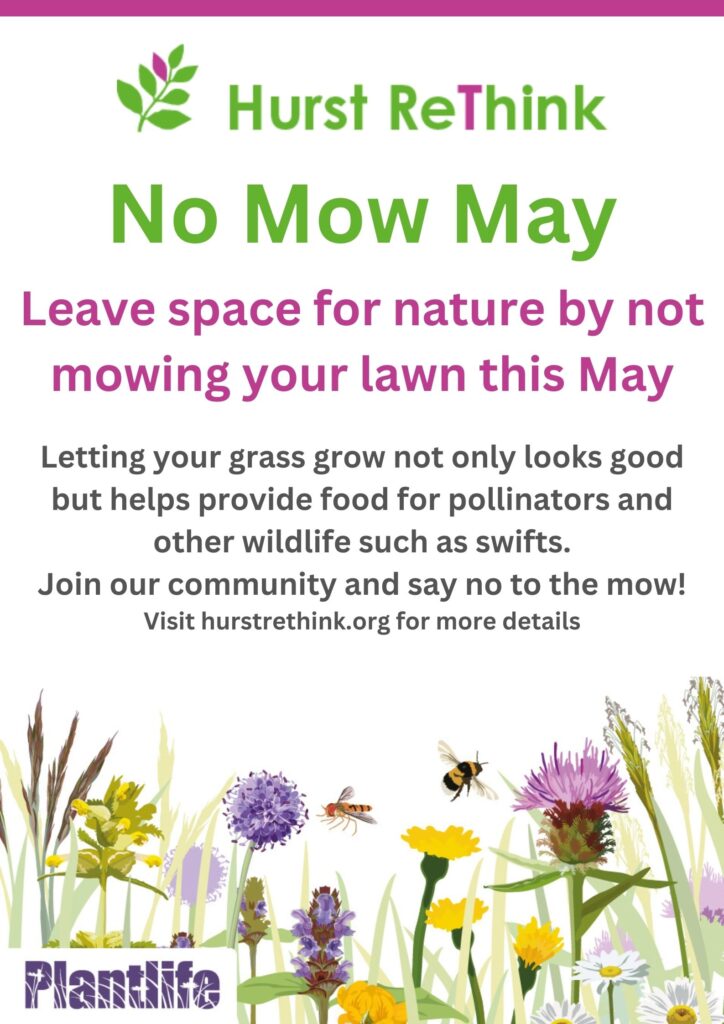
The temptation for many of us in spring is to get on with jobs in the garden – including getting that lawn into the classic British stripe. But have you considered that what might look wonderful to your eyes is in fact a desert for our struggling native wildlife?
In the UK, we have lost nearly 7.5 million acres of flower-rich meadow and pasture since the 1930s, and now only 1% of our countryside provides flowers for pollinators.
Our Lawns Hold Incredible Potential
However, there are 15 million gardens in the UK and our lawns have the potential to be a major wildflower nectar source – a staggering 200 species of flower are known to grow on lawns. In fact, incredibly simple changes in mowing can result in enough nectar from common flowers such as daisies, dandelions, buttercups and clover for ten times more bees and other pollinators. More bees and other insects also means more food for creatures further up the food chain like swifts – so by encouraging those at the bottom, we benefit many more.
Plantlife #NoMowMay and Every Flower Counts
No Mow May is the brainchild of the charity Plantlife, and we’re joining their nationwide campaign to urge people in Hurstpierpoint & Sayers Common to reduce their mowing this year to allow wildflowers to flourish.
All you have to do for No Mow May is leave your mower in the shed for the month of May, then record what flowers you have on a sample of your lawn at the end of the month. If you record your results on the Plantlife website, you can also get your personal nectar score which shows how many bees your garden can nourish. It’s a great thing to get the whole family involved in.
As we gear up to ‘No Mow May we’d also like you to think about other ways you can benefit wildlife in your garden – from simple things such as not using chemicals (including slug pellets) to more fun activities such as building a small pond, constructing bug hotels and creating hedgehog corridors.
This video explains very neatly what NoMowMay is all about:
What We’re Asking People To Do
- Write down the last time you mowed your lawn (this can be as early as April or even last year).
- Leave your mower in the shed for the month of May and let nature do the rest.
- Between 23rd and 31 May count the number of flowers in a square metre of your lawn.
- Enter your results on the Plantlife website and receive your very own Personal Nectar Score!
- This will show you how much nectar is being produced by the flowers in your lawn and how many bees it can support.
- Plantlife will provide the BN6 area with an area nectar score, so the more of us who take part, the better our score. Tell everyone you can about No Mow May and encourage them to take part!
Resources
- Garden Rethink Presentation – contains all you need to know about getting involved in No Mow May
- How To Take Part in No Mow May – printer friendly version
- A4 No Mow May Advertising poster
- Monty Don says ‘Don’t Cut Your Grass, Let It Grow’ article
- Every Flower Counts Flower ID sheet – 13 common lawn flowers
- Every Flower Counts Lawn Measurement Sheet
- Every Flower Counts Recording Sheet
- April Wildflower Spotters Sheet
- May Wildflower Spotters Sheet
- June Wildflower Spotters Sheet
- Plantlife Every Flower Counts details
Roadside Verges Project
Hurst Rethink are working with West Sussex County Council to increase biodiversity in our road verges. This is called the Community Road Verge project. In addition to our lawns, road verges can also be vital habitats for wild flowers. Verges also have the benefit of being able to connect to each other, creating lines of movement for pollinators. Because they haven’t been ploughed or disturbed as most farmland has been, they have the potential to be especially suitable for wildflowers.
WSCC looks after CRVs in a different way. Rather than five cuts per year, the CRVs receive one in the autumn. After the grass cut, the cuttings are removed.
The objective is to lower the fertility of the soil, enabling wildflowers that often already have seeds in the depths of the soil, to out-compete the grass. After a few years, the wildflowers should look more abundant
We are one of a group of pilot areas in West Sussex (Burgess Hill being another) who are working closely with the council to identify verges that will be mown less often, allowing flowers to flourish. Read more here.
